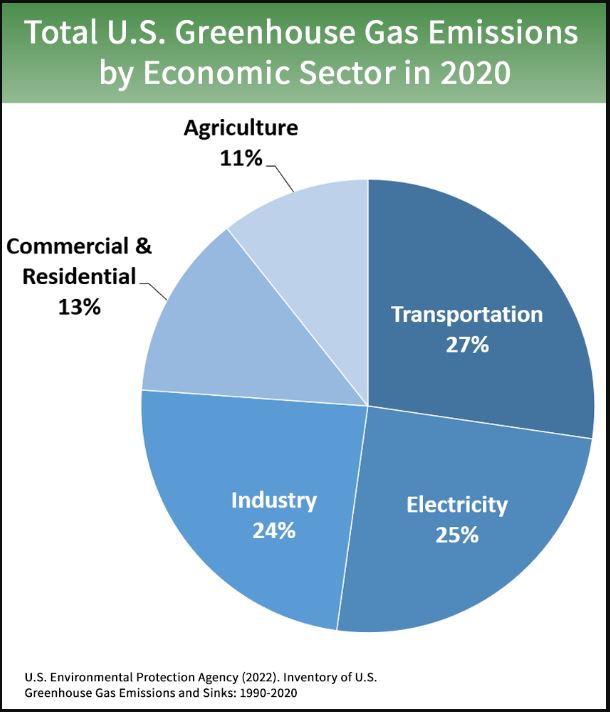Government involvement in regulating carbon emission
What happens when a guy with a Phd in Economics, who is also the founder of Carbon Washington, walks into a bar? If he’s Yoram Bauman, he probably gets a side-splitting joke out of it! Bauman is the self proclaimed, “first and only stand-up economist”, with a witty repertoire designed to take high-brow topics relating to the economy+global warming and break them down into layman’s terms. We’re pretty sure someone that clever would duck before walking into a bar (ouch!), but we’ll leave it to him to figure out his own punchline.
Yoram Bauman’s initiative placed the first ever carbon tax bill on the ballot in Washington (WA). The goal of the bill was to raise a new tax on the emission of carbon dioxide, leading people and companies to think twice about how their actions impact the environment. This tax would encourage companies to consider everything from how their physical facilities operate, to how their business travel impacts carbon emission. With the money generated through this new carbon tax, the government would be able to reduce sales tax, which would actually encourage people to spend money to help bolster the economy.
The bill didn’t pass, but it started a conversation leading to subsequent bills and awareness. Bauman’s work did successfully inspire a carbon tax in British Columbia, though it’s highly debatable if the ultimate goal of reducing carbon dioxide emission was achieved there.
“The reason we should do a carbon tax is because it’s the right thing to do. It’s economics 101, elementary stuff.”
Elon Musk
There’s a lot of spirited discussion about how much involvement governments should have in public health and lifestyle choices. Remember Mike Bloomberg’s soda regulation that fizzled out? Whether you’re in the camp that thinks carbon emission responsibility is an area where governments have failed to act, or if you see it as an area where people should be able to take matters into their own hands, it’s important to understand where we can find solutions on our own.
Business travel carbon emissions
PwC, Shell, Disney, Microsoft and many other large corporations have taken the charge in implementing self-imposed carbon emission tax or awareness within their companies. There’s a lot we can talk about here, so we’re going to focus on transportation as it’s the highest percentage of greenhouse gas emissions as reported by the EPA at 27%.
In the U.S., it’s reported that domestic business travel by air is one third of all travel, with similar results found in a study of travel from the US to Frankfurt, Germany. Germany is the country with the highest volume of business travel in the EU.
The UK has the second highest ranking for business travel, and prior to the COVID-19 pandemic had been the most traveled to business destinations. A single round-trip ticket from NYC to London is calculated to be higher than the emission an average person in 56 countries generates in an entire year.
TripIt’s added a feature that calculates a trip’s emission, and many emission calculators are available for a better understanding of the carbon footprint of a trip. American Express added a helpful feature to its travel management software that gives the user an option to filter for trips based on their carbon emissions.
Business meetings going green
Business travel is a huge boost for global economies and during a typical year produces a tremendous amount of economic activity. Banning business travel seems unlikely, but following a model from Microsoft, companies can implement a business travel carbon emission budget, very similar to a financial budget. Each time someone travels for business they’re taxed with a carbon emission fee, which corresponds to a dollar amount. This allows various teams to have a bucket to “spend” within reason, but also puts a calculated stop on how much travel any person can do. It then becomes up to each individual or team to determine how critical it is to be in person for a meeting. Microsoft also signed a sustainable aviation fuel (SAF) deal, which could result in more environmentally friendly travel between certain cities in the U.S.

PwC was in the tricky position of wanting to build relationships with clients, while also setting an ambitious goal in of reducing their total carbon emissions by 40% by 2022. They stress that the best way to cut emissions by travel is to simply not travel. They focus on the importance of using technology to connect and provide training to help their teams feel comfortable replacing much of their travel, though not all, with advanced meeting platforms that support collaborative work done from anywhere. With a long term focus, PwC found that in a ten year period they’ve reduced business travel by 4%, while also increasing their business by 100%.
Also Read: A Complete Guide: Planning a Decision Making Meeting
Travel at Disney is further reaching than their employees! Every guest in the Disney parks can hop on a Disney train guilt free. The trains are powered by a soy-based cooking oil recycled from the many resort kitchens.
Salesforce’s success in cutting travel
In 2019 Salesforce employee travel was so frequent that it would take more than 175,000 acres of forest a full year to sequester the equivalent of the amount of carbon dioxide that Salesforce emitted that year. In Salesforce’s 2020 Sustainability Stakeholder Impact Report, Salesforce pledged to address climate change in several ways. One is that, “Salesforce has set a goal to support and mobilize the conservation and restoration of 100 million trees by 2030.”1
Salesforce continues to focus on taking active steps to correct some of the environmental damage.
Salesforce’s head of sustainability, Patrick Flynn acknowledged that pre-pandemic the company had already committed to trying to curb business travel emissions. Once Covid hit, all business travel was brought to a complete halt and no travel policy was needed for carbon emission. While there was no choice, this meant that even meetings that previously were categorized as a priority for in-person interaction leveraged a meeting technology platform instead. Like many other companies, Salesforce found that even without the business travel that was previously considered necessary, business continued to flourish. In August 2020, CRM stock hit an all time high with continued successful growth.
Is data from the Covid no travel across the entire world useful to apply to the post-Covid time? Would Salesforce have been able to attain the same success if only their sales team was not traveling for in person meetings, but all other vendors were sending on-site representatives?
Also Read: Stop Skipping Lunch! How Glucose Levels Impact Meeting Productivity
Business travel carbon emission needs a global solution
Let’s go back to considering the carbon tax bill that Yoram Bauman’s bill proposed for the state of WA and consider Microsoft, the behemoth of a company headquartered in WA. Imagine if Microsoft were trying to land an important account for their Office 365 platform, but the Google Office team is able to show up in person and woo the prospect. Accepting that in-person sales visits build better relationships and participation than those done remotely, how would fair business enterprise continue to flourish if state-to-state there are different rules for who can travel to in-person meetings and country to country there’s a vastly different appreciation of the impact of carbon emissions? Could Salesforce sustain their growth numbers working all remotely if their competitors are able to travel on-site?
The idea of a government mandated carbon emission tax can only be effective if there’s a global effort that tackles this problem. The Paris Climate Agreement is an effort in this direction, but has proven to be quite complicated to implement.
Where does that leave us? For now, we can leverage emerging technologies to reduce the carbon footprint of our meetings. Companies can also follow in Microsoft’s example with company guidelines that create an allowance for carbon emission. Carbon emission impact calculations continue to refine their accuracy and are more readily available. Let’s each do our part to create awareness and reduce our carbon footprint.
- https://www.salesforce.com/news/wp-content/uploads/sites/3/2020/08/sustainability-FY20-stakeholder-impact-report.pdf.







